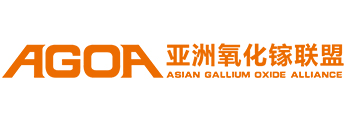

【Device Papers】Engineering Charge Separation in α-Ga₂O₃ Nanorod Arrays for Photoelectrochemical UV Detection
日期:2024-10-31阅读:623
Researchers from the Nanjing University of Posts and Telecommunications have published a dissertation titled "Engineering Charge Separation in α-Ga2O3 Nanorod Arrays for Photoelectrochemical UV Detection" in ACS Applied Nano Materials.
Abstract
Oxygen vacancy (OV) states are the most prevalent chemical defects in metal oxides without extrinsic dopants, which govern the regime of photoelectrochemical (PEC) kinetics. So far, although tremendous strategies are developed to overcome the negative effects from OV, the threshold at which OV plays a positive role has not been specifically studied. Furthermore, the kinetics of stoichiometry changes as well as their effects on the charge transport aroused from manipulating OV distribution are still in confusion. Here, taking α-Ga2O3 nanorod arrays as the model, we show the evolution mechanism about the changes in OV distribution during vacancy engineering. Since the O diffusion flow into bulk is regulated by the surface OV-assisted migration mechanism, the surface OV concentration decreased first and recovered slightly after a period of time. This is deviated from the common sense that the longtime O2 annealing should bring about monotonical OV decrease at the surface. After PEC characterization and theory calculation, the results show that OV plays to the score in the PEC process, depending on its own spatial distribution. The optimized engineering strategy of OV spatial distribution is proposed to establish the efficient carrier separation nanoarchitectures for high-performance UV photodetection. This work provides an insight for clarifying fundamental rules for defect engineering in the PEC field.
DOI:
https://doi.org/10.1016/j.jmat.2024.06.006


